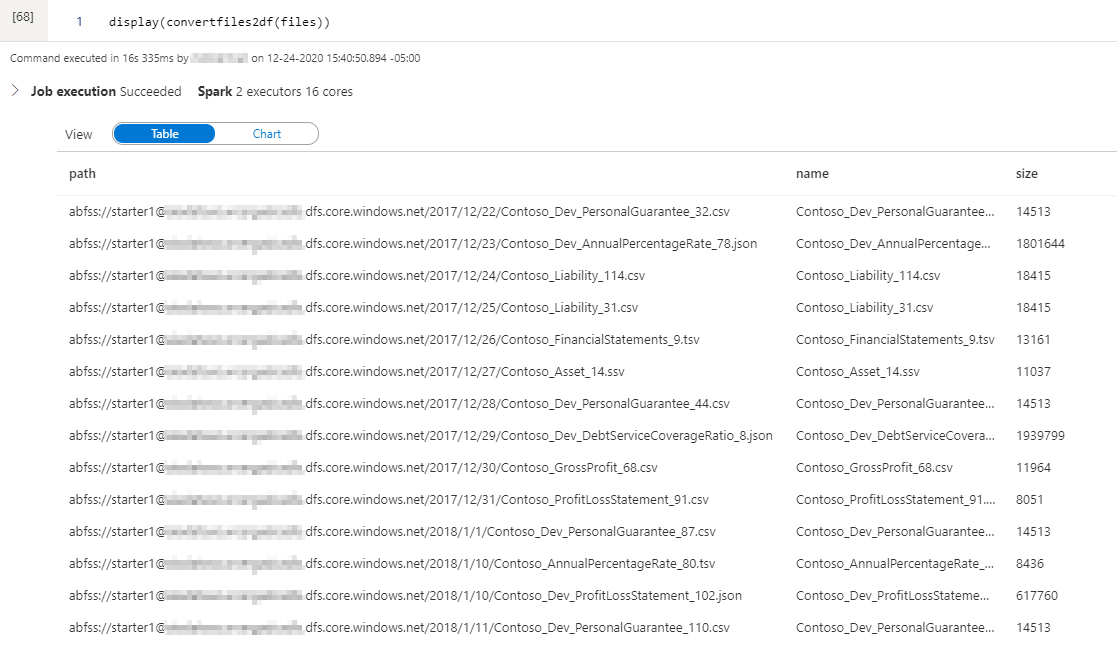How to Recurse Data Lake Folders with Synapse Spark Pools
By default, mssparkutils file listing capabilities don't come with a recursion flag - probably by design.
One of the gotchas I ran into when going through a recent OpenHack was manually clicking through a Data Lake with a hefty number of file sources and partitions. I was in my Synapse notebook crunched for time, wishing there was a way to recursively list all files from a root directory, to figure out what DataFrames I needed to import, what the schema looks like, what the transformation pipeline is going to look like etc.
The out-of-the-box mssparkutils.fs.ls('path') command returns something like this:
We're also left with the default formatting above, as the display() command is geared towards DataFrames. Calling display(mssparkutils.fs.ls(root)) returns:
AssertionError: dataType <py4j.java_gateway.JavaMember object at 0x7fa481050358> should be an instance of <class 'pyspark.sql.types.DataType'>
Traceback (most recent call last):
File "/home/trusted-service-user/cluster-env/env/lib/python3.6/site-packages/notebookutils/visualization/display.py", line 96, in display
df = _convert(data)Since mssparkutils.fs.ls(root) returns a list object instead.
deep_ls & convertfiles2df for Synapse Spark Pools
The following functions functionally achieve recursion and pretty printing in Synapse Spark Pool notebooks:
def deep_ls(path: str, max_depth=1):
"""
List all files and folders in specified path and
subfolders within maximum recursion depth.
"""
# List all files in path
li = mssparkutils.fs.ls(path)
# Return all files
for x in li:
if x.size != 0:
yield x
# If the max_depth has not been reached, start
# listing files and folders in subdirectories
if max_depth > 1:
for x in li:
if x.size != 0:
continue
for y in deep_ls(x.path, max_depth - 1):
yield y
# If max_depth has been reached,
# return the folders
else:
for x in li:
if x.size == 0:
yield x
def convertfiles2df(files):
"""
Converts FileInfo object into Pandas DataFrame to enable display
"""
# Disable Arrow-based transfers since the Pandas DataFrame is tiny
spark.conf.set("spark.sql.execution.arrow.enabled", "false")
schema = ['path','name','size']
df = pd.DataFrame([[getattr(i,j) for j in schema] for i in files], columns = schema).sort_values('path')
return(df)For convertfiles2df, we're basically taking the list returned by mssparkutils.fs.ls, and converting it into DataFrame, so it works with the notebook display command.
# Get files
files = list(deep_ls(root, max_depth=20))
# Display with Pretty Printing
display(convertfiles2df(files))The example call above returns:
Much easier on the eye, and saves going through all the folders manually!

